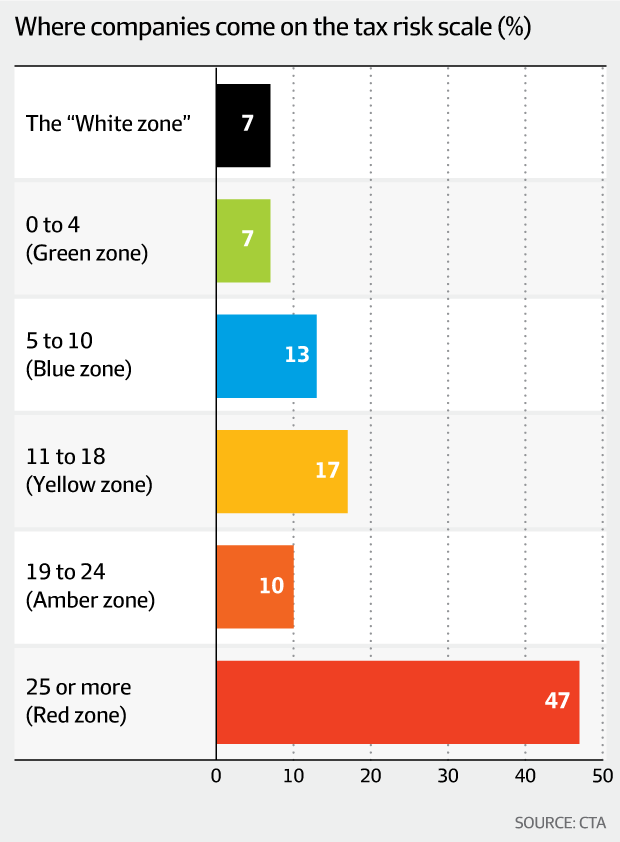ATO’s finance ruling puts companies the ‘red zone’
The Australian Tax Office is preparing to take several companies to court over abuse of thin capitalisation rules and will start a wave of audits of large multinationals with complex cross-border loans, as it continues to take a hardline approach in the wake of its win against Chevron.
The ATO is mounting legal action against at least five companies for breaching thin capitalisation rules, which prevent businesses loading up their Australian operations with debt to obtain a tax advantage. The companies involved have not yet been identified publicly.
At the same time, companies that fall into the highest-risk “red zone” for cross-border related-party financing face fast-tracked review and audit activity, a “tougher road” to resolving disputes and an increased prospect of litigation.
Tax advisers say they are alarmed that so many big companies will fall into the red zone and the Corporate Tax Association, representing the biggest corporate taxpayers, has accused the ATO of “overreach” in the pursuit of revenue.
“We think that many taxpayers are going to – inappropriately and undeservedly – end up in the riskiest zones and face unnecessary and costly review activity by the ATO,” Greenwoods & Herbert Smith Freehills managing director Tony Frost said.
“We strongly recommend that the ATO tone down the confrontational language employed in the draft, especially as regards the red zone.”
Cross-border loans between related companies are the latest frontier in the ATO’s action against multinational tax avoidance.
Buoyed by its transfer pricing victory over Chevron, it has issued draft guidance asks companies to self-assess their risk rating according to a series of loan features.
The guidance makes it clear the ATO views with suspicious features such as borrowing at interest rates in excess of 1 per cent of a parent company, borrowing from a related party in a low-tax jurisdiction and borrowing in a foreign currency.
The ATO successfully claimed Chevron owed roughly $340 million, largely because the terms of a loan to develop gas fields off Western Australia allowed the company to make inflated interest deductions and therefore slash its tax bill.
At issue was whether the terms of the loan were at arm’s length, which is required under transfer pricing laws. Chevron is seeking special leave to appeal to the High Court.
The ATO guidance applies to companies with related-party financing arrangements, either inbound or outbound, worth $50 million or more.
Demerit points are awarded for each type of behaviour or loan feature; 25 or more points and a company falls into the red zone.
There are consequences associated with being assessed as high risk, including “potential for the matter to proceed directly to audit” and “an increased prospect of litigation”.
‘Blurs the boundaries’
CTA chief executive Michelle de Niese said it was “difficult to envisage a more serious set of circumstances applying to a taxpayer” and as such only the most egregious taxpayers should fall into the highest risk categories.
Yet a survey of members suggested nearly 60 per cent would end up in the red and amber zones. The sample size was small – only 30 companies, 14 of which said they were in the red zone and three were in amber.
“In our view the document in its current form blurs the boundaries between providing taxpayers with practical guidance based on the current law and the ATO addressing apparent revenue concerns with a limited number of taxpayers,” Ms de Niese said in a submission to the ATO, which has sought industry feedback on the guidance.
A third of respondents in the limited CTA survey were resources companies, 41 per cent were in an “other” category, 16 per cent in manufacturing and 12 per cent in financial services.
The figures align with the number of companies the ATO has previously indicated would be in the high-risk zones.
ATO deputy commissioner Jeremy Hirschhorn, a former KPMG tax partner, previously told The Australian Financial Review that companies with large interest deductions are being scrutinised, about a third of which the ATO believes will fall into the red zone.
Mr Hirschhorn anticipated a wave of refinancing that would produce hundreds of millions in extra tax revenue. In 2014-15, total related-party loans equalled $420 billion, almost half of which where in the energy and resources sector. Of those, $97 billion were in the oil and gas industry.
Mr Hirschhorn previously told the Financial Review that the ATO is suspicious of loans that combined a higher interest rate and a derivative.
Mr Hirschhorn expected to see refinancing to “change those instruments into plain, vanilla loans … with interest rates that are within about 1 per cent of the parent company”.
While Chevron involved transfer pricing, there are other aspects of cross-border related-party debt financing that the ATO is scrutinising.
The ATO is mounting legal cases against at least five companies for abusing thin capitalisation rules. None of the cases have emerged publicly yet.
But answering questions in a senate economics committee hearing in late June Mr Hirschhorn said there were “some potentially large ones … some schemes to avoid interest withholding tax”.
“This is an area of great activity for us around the debt integrity,” Mr Hirschhorn said. “It does go to the tax borne by foreign capital.”




